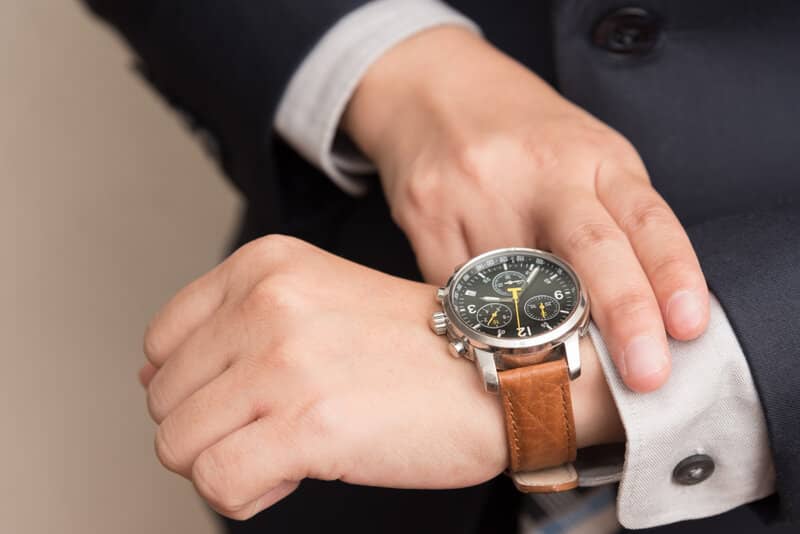10 Tips for Watch Care to Get the Best from your Watch
There are enemies on your watch. These include dust, dirt, shocks, moisture, UV radiation, and extreme temperatures. Watchmakers like the IWC have been developing and using engineering solutions to combat these enemies for over a century.
Today, technology has come up with watches, which are more resistant to water and shock than ever before.
However, a single user uses the front line to attack these enemies. A high-quality mechanical watch cannot work well if misused or even inadvertently used.
All mechanical watches have complex mechanisms, typically 200 to 400 moving parts, where many of them are small. Proper operation of these parts requires maintenance and care.
As a watch collector for over three decades, I have followed many principles to keep the watches in top condition. I learned about some of these tricky methods, like dropping the watch when winding it and others requiring common sense or following all the rules from maintenance guides.
Given the differing opinions about watches, it is not surprising to find not everyone agrees on watch care. If everything works for you, it might be enough.
Here are ten tips for watch care.
- Keep the watch wound
Although modern lubricants last for long, over time, they conceal or dry out. A properly lubricated watch works better and lasts longer. Winding makes the watch work and distributes the lubricants. You do not need to do this for every watch, every day. For instance, I have different pocket watches and wind them up once a month.
Many watches are adjusted and regulated for full winds. An isochronous error can occur when the mainspring uncoils, which is usually minimal, but accuracy is supposed to be better with the fully wound watch.
A manual wind watch is a great way to wind it around at once every day constantly. Every day early in the morning, when I dress, I try doing it. For the seven or eight-day movements, I later learned the phrase: “Sunday is the day for the wind.”
Relate: How tight should a watch be around your wrist?
- Do not wind the watch around the wrist
When you wear the crown with the watch on the wrist, many people tilt the watch up from the crown. This generates pressure on a stem, which causes it to break or bend.
- Pay attention to where the clock is winding
Now that you have removed the watch from the wrist to wind, it does not wind it back when walking on the street or any other place with a hard surface. One time I wound the tourbillon controller in a bathroom, and it drops on the floor tiles.
Fortunately, my dear watch survived some scratches, but my heart stopped for a few seconds.
- Keep it clean, but don’t use soap
A dirty watch does not look good, and at times small debris can get inside. I only use the microfiber polishing cloth for the watch.
Typically, a little water will not hurt as long as your crown is completely secure and prevents the leather strap from getting wet. However, never use water and soap. Soap molecules can find their way in very small spaces, and you can do nothing to help the watch.
- When it comes to water, check these seals and gaskets regularly
The watch has a high water resistance rate, but the material of the seals and gaskets can dry out, affecting the watch’s water resistance. If you shower or swim with it, you should check its water-resistance every year. There are different machines, which many watchmakers use to water resistance through pressure settings, and this is not an expensive or time-consuming test.
If I don’t have the diving watch with exceptional water resistance, but I’m caught in the pouring rain, I take the watch off the wrist and put it in the pocket.
Also read: Why You Should Start Wearing A Wrist Watch?
- Use the warranty effectively
IWC guarantees its watches an 8-year function from the time of purchase without any problem caused by improper use.
If there are minor issues with the watch that you can wait for, it is a good idea to send the watch for a warranty repair soon before the expiry warranty period. This will extend the warranty for one year. Also, it allows you to solve everything at once.
- Take no chances or test the watch to its fullest
I’ve heard of owners who desired to know if the watch was bulletproof by putting it in a freezer. I do not understand it with a subtle, complicated, and expensive instrument.
I have used and understood many others their automatic watches when playing tennis, golf, or other sports.
Regardless of the high survival rate, I am not sure if it makes sense. Fortunately for my watch, but unluckily for the golf game, my stroke does not have the pro’s swing power. But what I require is one with the best impact, and your watch will have some problems.
I remember a Scandinavian collector asked whether his IWC watch would resist wood chopping. I remember a Tour de France-wearing rider who had a good watch. I don’t know why anyone would need to test their mechanical watch this way.
Remember that the automatic watches wind with the oscillating weight. Typically, all mechanical watches work because of the swings in a lever escapement.
The impact protection mechanisms of the modern watches, Incabloc, or KIF, are great; they don’t offer complete protection against blows from all angles.
Maybe I am a very protective owner, but I’ve never understood why a Tour de France rider could risk scratching his watch in an accident. But maybe it is just me.
Also Read: Mens Fossil Watches Under $50
- The straps must be changed very carefully
Great shocks can damage the mechanism of any watch, but the scratches on the case can be minimal. But many collectors do not like scratches and do everything to avoid them.
The easiest way to scratch the watch lug is to replace the strap. An expert can design the watch course by changing the strap after assembling and disassembling the basic movement. Typically, it is not so easy to get it right.
If you want to change the straps, you can learn it from a teacher or at least by watching the instructional video online. Use the right tool, known as the spring bar tool but not a knife. Typically, I consider using the high-quality tools where many Bergeon swiss are considered to be excellent. The price difference is small, and low-quality tools often have thicker forks that can be moved easily.
If you have to go through this procedure, the first thing to do is practice with the lesser quality watch. Work from behind every time so that scratches and slips will be less visible. If you are not sure if you can slip it, put the masking tape on the watch lugs first.
- Service is very important
Lubricants congeal or dry out over time, and the teeth and cogs wear. Most modern watches hit 691,200 beats in a single day. Typically, a good mechanical watch requires regular service. Regular maintenance is not a profitable activity in the watch industry. While post-warranty maintenance can be expensive, it often costs more to the company.
The IWC is losing money on the services. There are various reasons for this, such as a need to maintain many inventory parts, but also maintaining the watch is a double task. For full service, the watch must be completely disassembled and reassembled. It is often more difficult to assemble than a new watch because the parts are worn out and no longer fit well.
Everyone wonders how long the ideal interval between the full services should be. I looked at my watch when it looked like it needed the service. The watchmaker communicated to me that the watches tell you when to be fixed by symptoms showing up. The watch runs too fast or too slow, or worst, it stops. It does not remain wound, and the date does not change even though it is charged.
Sometimes the problem detected is slight, and the watch will not require full maintenance. Having the best relationship with the accredited dealer can be helpful as they can give you an informed second opinion about the service required.
- Enjoy the watch
Someone said that if everybody saw everything that could go wrong at birth, no one could conceive a child. In that case, when you evaluate all the possible problems with the mechanical watch, few people will want or appreciate them. This is a big mistake.
The problems with mechanical watches are very rare, particularly given the complexity of even the simple just-in-time model. Many problems can be resolved quickly and easily. From the perspective of the owner, the basic thing is to keep it calm. Do not exceed your watch’s limits.
Wear the watch, and it will be enjoyable. The fine watch doesn’t need to be kept in the locked safe but has to be used. Wearing it assists it to function, keeps the wound and the lubricants running. Wearing the IWC watch will define you and assist you in loving it even more.





